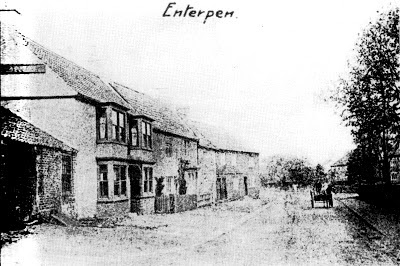Dragons, to begin with. There was a dragon at Sexhow - and a dragon at Whorl Hill near Swainby.
 |
| View of Whorl Hill |
(Or possibly, the same dragon, with two lairs).
These frightful Worms were a menace and a dread to the people. They suffered terribly from the depredations of the beasts, hoping always to be rescued by some gallant knight in shining armour.
When at last the Worm of Sexhow was slain, the happy villagers carried its pelt to the parish church in Hutton Rudby, and hung it in triumph against the wall, where it remained for many long years ...
And now the tale of Awd Nan of Sexhow - a suitably frightful story for Hallowe'en.
Awd Nan had been the village witch. One night, her ghost appeared to a Sexhow farmer to tell him the whereabouts of some buried treasure. The silver he was to keep for himself, but the gold must be given to Awd Nan's niece, who lived in Stokesley. At the end of a year, the ghost warned him, she would be back to see what he had done. But the foolish man kept both the gold and the silver. At last Awd Nan reappeared to him and jumped up behind him on his horse at Stokesley. Seizing him by the throat, she gripped him tighter and tighter until he fell dead at his own door.
And then there's the White Lady of Skutterskelfe (though she might be just the mist over the beck) and some speak of the Grey Lady of Drumrauch, though little is known about her. I sometimes wonder if they were just ways of terrifying the young from straying far from the village.










-.jpg)

